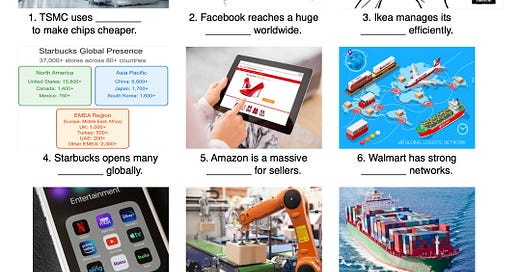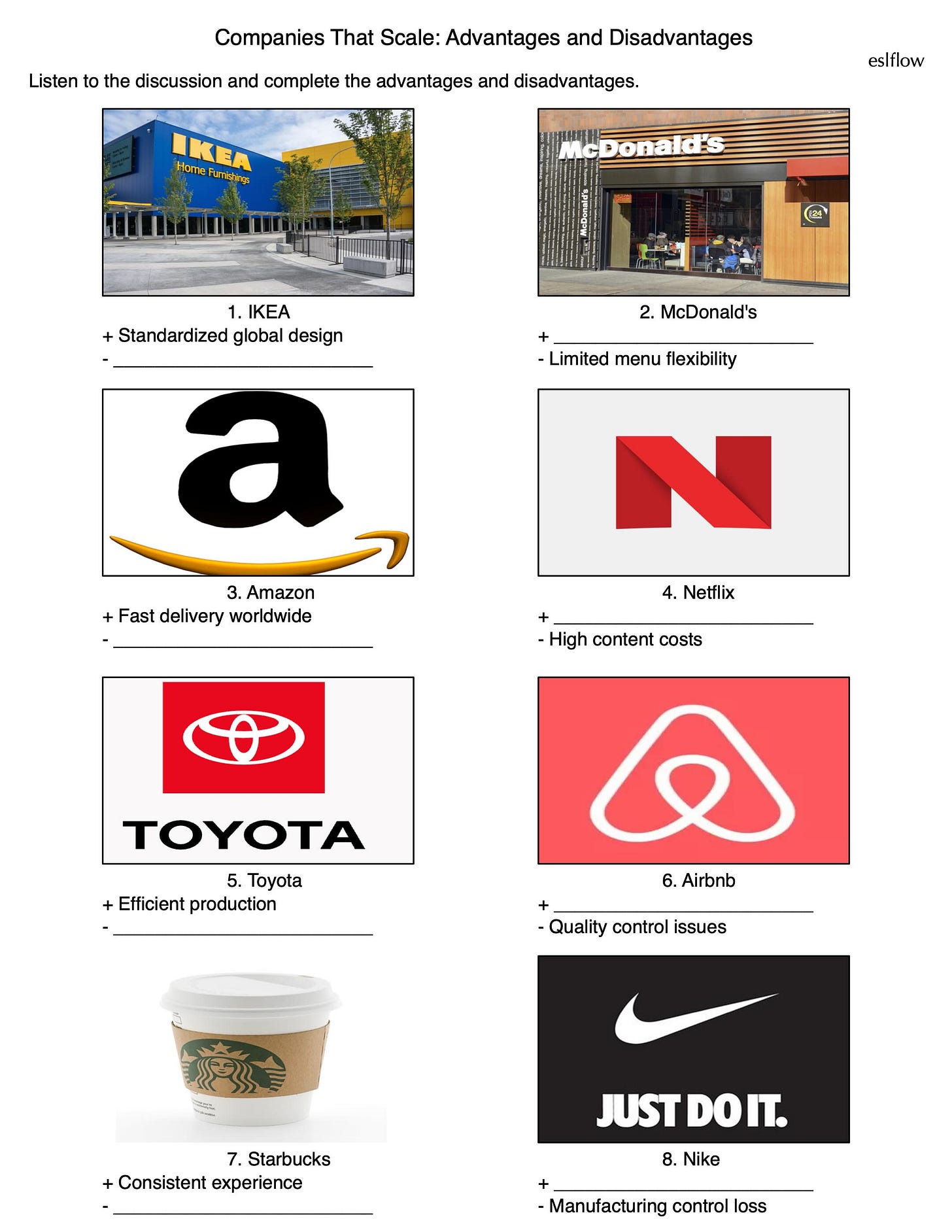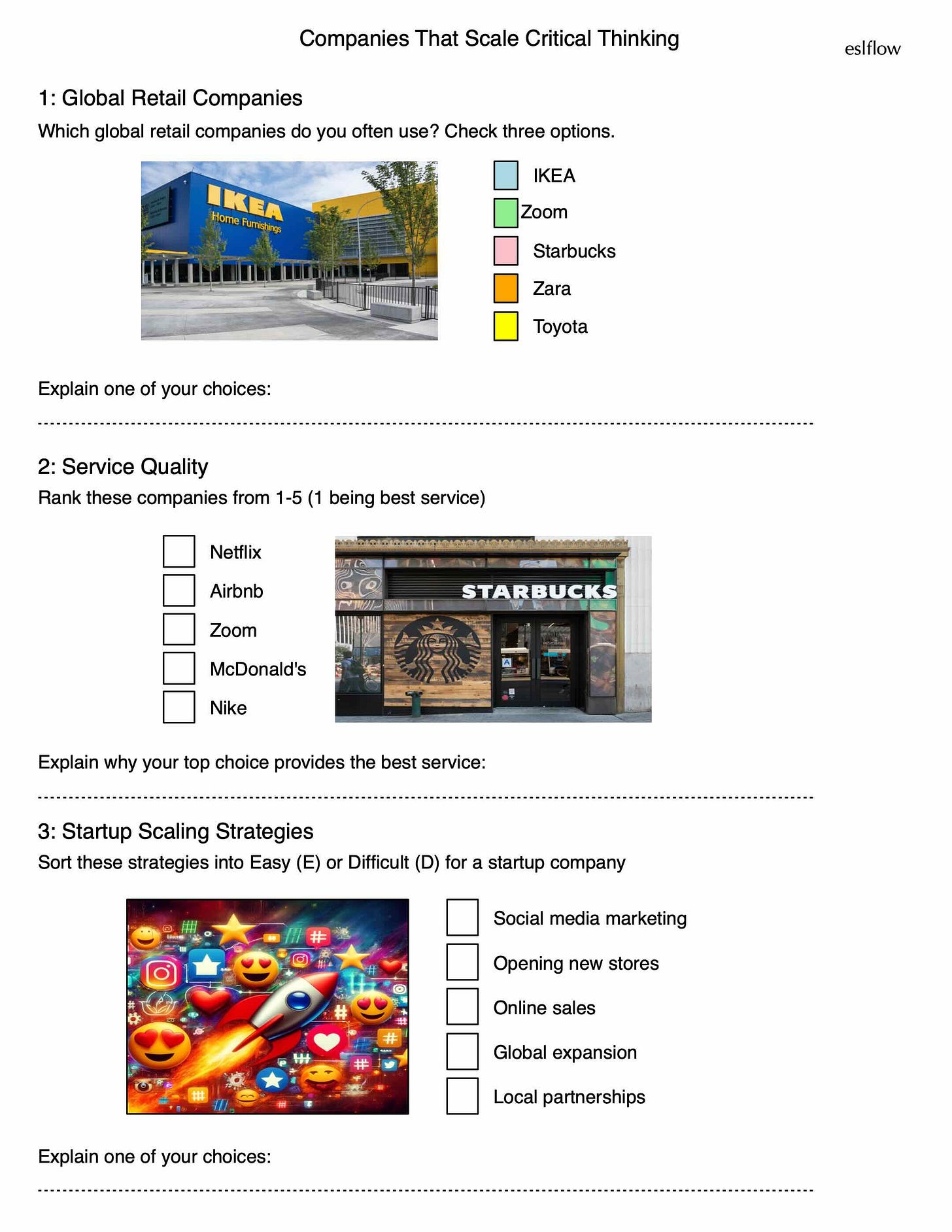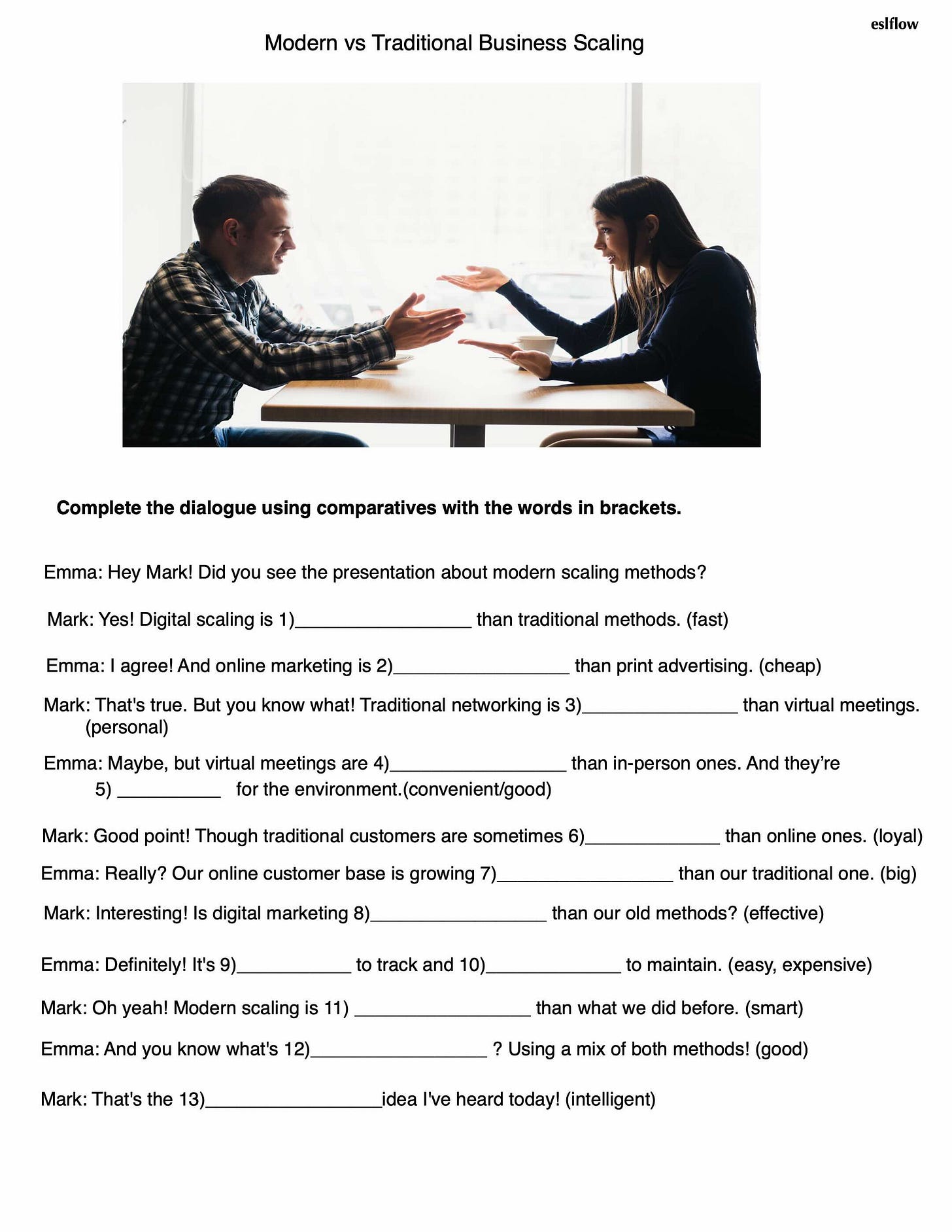Today's post content:
10+ exercises about companies and their scaling strategies
4 dialogues/listening exercises
Paid subscribers have access to download the complete materials at the end of the post.
Companies that Scale: Visual Vocabulary
Picture yourself walking through TSMC's state-of-the-art chip factory, where scaling through automation enables mass production of microchips. Zoom out to see Walmart's vast distribution networks, with container ships and trucks moving products across continents—a masterclass in traditional scaling through efficient supply chains.
Zoom out further to witness Netflix's digital scaling strategy, streaming content to millions of viewers simultaneously worldwide. From retail giants to tech innovators, these companies demonstrate how innovative scaling transforms local success into global impact. Today's lesson explores distinct scaling strategies that drive business growth in our interconnected world, from standardization and bulk buying to brand recognition and digital platforms.
Companies that Scale: Dialogue
Imagine two restaurants trying to serve more customers. One builds bigger kitchens, buys more ingredients, and hires more staff—that's traditional scaling. The other creates a cooking app that teaches millions of people to make their recipes at home—that's digital scaling.
This dialogue and listening exercise explores how companies are reinventing the rules of growth in the digital age. By examining real companies transforming from physical to digital scaling, students start to understand the fascinating evolution of business expansion strategies.
The Advantages and Disadvantages of Scaling
Have you ever wondered why your Big Mac tastes the same whether you're in Tokyo or Toronto? Or why that IKEA shelf looks identical in Dubai and Dublin? These are the results of scaling—when companies grow from serving local customers to operating worldwide.
By examining the advantages and disadvantages of products and services offered by eight global brands, we can explore how these businesses scale their operations to deliver consistent products and services across the globe. Through their stories, we'll discover what companies gain—and what they might sacrifice—along the path to global expansion.
Scaling – Critical Thinking
What makes Netflix different from traditional TV? Why does IKEA's showroom feel like a journey rather than just a store? Through the lens of companies that shape our daily lives, you'll uncover the strategic decisions that transformed small ideas into global successes.
Through three critical thinking exercises, students will develop the analytical skills needed to understand the architecture of modern business growth. The exercises will challenge them to think critically about how successful companies adapt, innovate, and scale their operations in unique ways.
Comparing Scaling Strategies: Grammar Role Play (Comparatives)
Imagine standing at a business crossroads - one path leads to rows of brick-and-mortar stores, while the other winds through a digital landscape of automated systems and virtual teams. This choice faces countless businesses today as they plan their growth. Through a dialogue between two professionals navigating this very decision, you'll develop the language needed to compare scaling strategies, weigh trade-offs, and express preferences about modern versus traditional business expansion.
The Language of Scaling
Imagine standing at a business crossroads—one path leads to rows of brick-and-mortar stores, while the other winds through digital scaling with automated systems and virtual teams. This choice faces countless businesses today as they plan their growth. Through a dialogue between two professionals navigating this very decision, you'll develop the language needed to compare scaling strategies, weigh trade-offs, and express preferences between digital and traditional business expansion.






